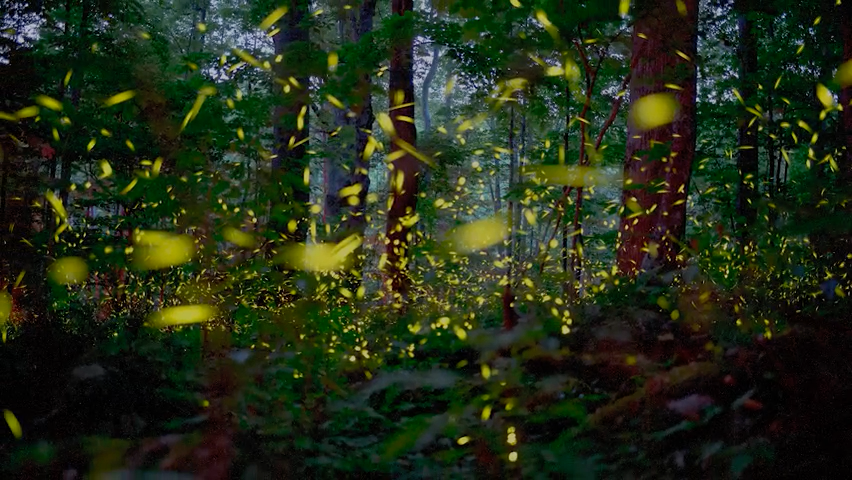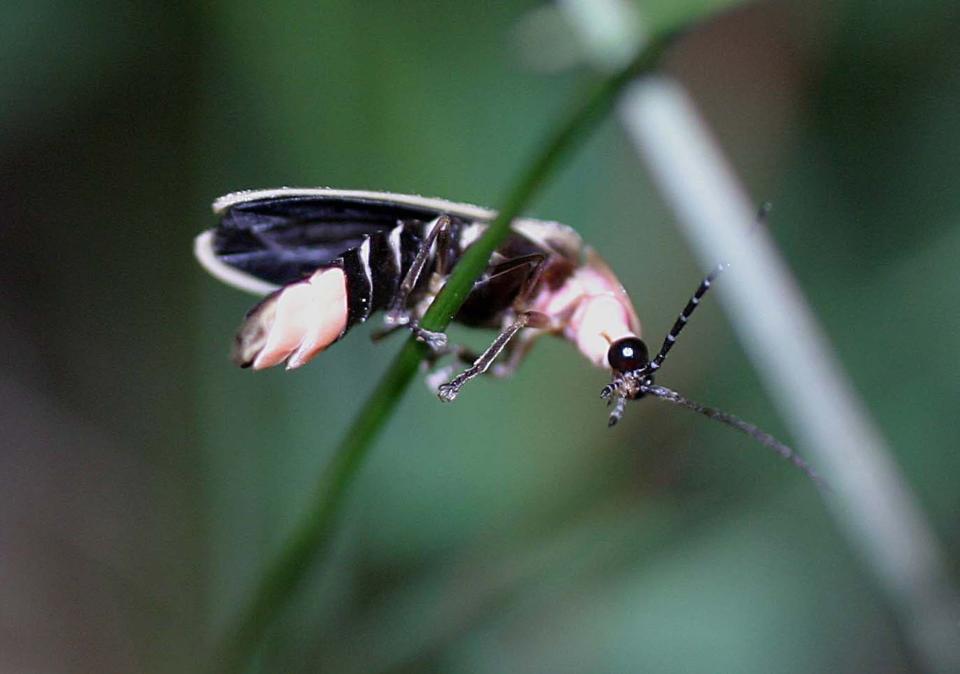Lightning bugs or fireflies: What are those glowing insects called?
It’s an age-old debate that divides families, friends, states and nations: Lightning bugs or fireflies?
You chased them as a kid, captured them in your hands. Maybe even put them in jars for an hour or two to study before releasing them to the night sky.
Everyone has the same fond memories, but agreeing on what to call those glowing insects is another matter.
The answer may surprise you. It’s both simple and complicated — all at once. Drumroll please …
Both are right.
And neither are right.
Yep, you read that correctly.
Scrub Hub: Are lightning bugs disappearing from Indiana's night skies?
Both fireflies and lightning bugs refer to the same insect. And both are commonly accepted across the U.S. Which term you use, however, might depend on where you grew up and live.

The environment and geography in which people grow up often can have a big impact on language. Think about accents as well as turns of phrase and expressions, y'all. One theory concludes the same is true for whether you prefer to use firefly or lightning bug.
As it so happens, research shows that firefly is the more common term used out West and in New England. Lightning bug is the term of choice for most folks from the Midwest and the South.
But why it breaks down that way gets even more interesting.
A meteorological researcher surmised a couple years ago that the areas where people tend to say “lightning bug” overlaps with the parts of the country where lightning strikes are more frequent.
I’m sure you can see where this is going. In much of the West, where “firefly” is used more frequently, wildfires are a more regular occurrence.
The correlation could be a mere coincidence. More research is needed to confirm if that is in fact the case. But at the very least, it makes for a good tale and more regional debate.
Many people in Indiana feel strongly about using what they say is the correct term. Of a couple dozen comments on a Facebook thread — a very serious poll — the vast majority said they are known as lightning bugs in the Hoosier state.
“Nobody from Indiana calls them fireflies,” one commenter even went so far to say.

And in Europe, they are called something else entirely: glowworms.
All that said, none of those terms are correct.
They are not bugs, flies or worms.
They’re beetles (which is actually different from a bug in scientific entomology terms).
It's tick season: Here are tips to protect against the blood-sucking bugs
These insects are nocturnal members of the Lampyridae family. They are beetles, just like Ladybugs, and like others in their family, they have a pair of hardened wing cases that the wings fold underneath.
So next time this debate sparks up around a campfire or a late night barbecue, you can use this information to help mediate and keep things civil.
A few other lightning bug, firefly facts you may not have known
Fireflies use their flashes for more than lighting up the night sky. That’s how they attract a mate. In other words, that’s their love language. Usually the bugs you see hovering in your backyard are the males. Each species will flash in different shapes of different sequences — a code if you will — to make sure they find the right partner.
The females of one firefly species have earned the nickname femme fatales. That’s because they will mimic the flash patterns of other species to lure in unsuspecting males. Then they strike — a nice way of saying they have that male for dinner.
Not all lightning bugs light up. There are several species of the beetle that actually don’t produce light in their adult form, and these are known as “dark” fireflies. These species use their sense of smell to mate. That said, all species of fireflies — even the dark ones — light up in their larval stage.
All of the flashing fireflies in Indiana are classified into three groups, distinguished by the color that they glow. Species in the genus Photinus have a yellow flash, those in the Photuris genus have a green flash and those in the Pyractomena genus have an amber flash. Indiana’s state insect, the Say’s firefly, falls into that last category.
While many are indistinguishable to the untrained eye, there are lots (lots) of different species of lightning bugs: More than 1,900 across the globe. Within North America, there are about 170 different known types of the beetle. One of the biggest species, found in East Asia, can grow to be the size of your palm!
Fireflies have been around since the time of the dinosaurs, and scientists are still just scratching the surface in terms of studying these creatures. Researchers hope to continue learning from them for medical advancement as well as understanding how they communicate and synchronize with each other.

Call IndyStar reporter Sarah Bowman at 317-444-6129 or email at sarah.bowman@indystar.com. Follow her on Twitter and Facebook: @IndyStarSarah. Connect with IndyStar’s environmental reporters: Join The Scrub on Facebook.
IndyStar's environmental reporting project is made possible through the generous support of the nonprofit Nina Mason Pulliam Charitable Trust.
This article originally appeared on Indianapolis Star: Indiana outdoors: Are fireflies and lightning bugs the same insect?

